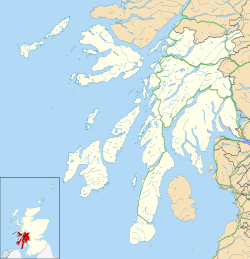| RAF Bowmore | |
|---|---|
| Bowmore, Argyll and Bute in Scotland | |
| Site information | |
| Owner | Air Ministry |
| Operator | Royal Air Force |
| Controlled by | RAF Coastal Command |
| Location | |
| Coordinates | 55°45′26″N6°17′17″W / 55.75722°N 6.28806°W |
| Site history | |
| Built | 1940 |
| In use | 1940-1946 |
| Battles/wars | European theatre of World War II |
Royal Air Force Bowmore or more simply RAF Bowmore is a former Royal Air Force seaplane station located in Bowmore, Argyll and Bute, Scotland.
Contents
The following units were here at some point: [1]
- No. 119 Squadron RAF reformed here on 13 March 1941 and operated Short S.26M and Short S.23M, Consolidated PBY Catalina IB until 4 August 1941 [2]
- No. 246 Squadron RAF reformed here on 5 August 1942 using Short Sunderland III's until 30 April 1943 when the squadron was disbanded [3]
- No. 422 Squadron RCAF between 8 May 1943 and 3 November 1943 operating Sunderland III's [4]
- ‘G’ Flight was disbanded here on 13 March 1941 and became No. 119 Squadron. The Flight operated S.23 and S.26's. [5]

